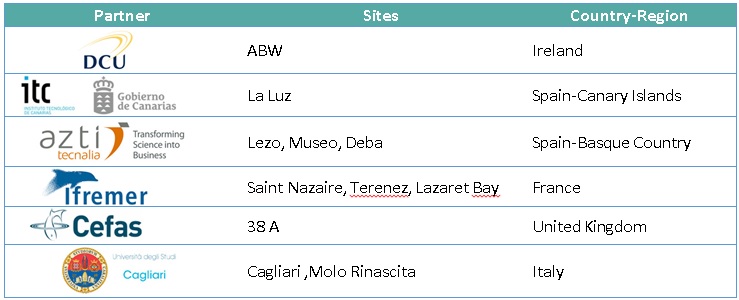Designing and development of an additional experiment performed by IFREMER at the laboratory
Monitool results point out that, even in suspected highly contaminated sites (harbours, marinas, etc.), concentrations of metals (Cd, Ni and Pb) in marine water (dissolved fraction) are far below the AA-EQSmarine water. In an attempt to solve this and other matters, a new study appeared to be necessary. Therefore, Ifremer proposed to carry on an additional experiment to get more data in laboratory conditions in order to:
- Improve the generic relationship between the metal concentration measured in DGT and the concentration measured in the dissolved fraction (MDGT/Mdissolved), by eliminating the bias due the fact that we are comparing metal results by spot sampling (dissolved metal) versus time integrated measurement (labile metal - DGT).
- Reach concentrations close to the AA-EQS marine water in order to check the validity of that relationship with higher concentrations.
The approach is based on measuring the concentrations of Cd, Ni, Pb and Hg in the water-samples consisted of 10 L from previously selected different sampling locations. These metals were determined in the 10 L containers (stirred throughout the duration of the experiment) by the DGT technique (exposed during 5/7 days in the water samples) and by the analysis of the filtered water samples by ICPMS, ASV and cold vapour atomic fluorescence spectroscopy for Hg.
 |
 |
Marine water samples, on a stirring table during DGT deployment.
Different physico-chemical parameters were also analysed in the same samples: salinity, alkalinity, "ligands" concentration, suspended matter concentration, particulate metals, chlorophyll, pheophytin, dissolved and particulate organic carbon (DOC and POC respectively), as well as nutrients concentrations. In addition, ecotoxicological tests were carried out in these samples.
All the analyses were performed by Ifremer, except the ASV, POC, chlorophyll, pheopigments and DOC, which were carried out by LEMAR (Université de Bretagne Occidentale).
The ten selected sampling locations were the ones sampled by the Partners during MONITOOL campaigns, where the highest concentrations of Pb, Cd or Ni were determined, or those with specific environmental conditions (high salinity, low suspended particular matter). The selected locations and partners responsible for collecting the samples were:

Additionally, 3 samples of filtered (0.2µm) and sterilized seawater were included: 2 of the samples were spiked to have quantifiable concentrations in Cd, Ni and Pb of the order of EQS and EQS /2.
The experiment started on July 15th and the results, which will be available by December 2020, are expected to provide interesting conclusions.



